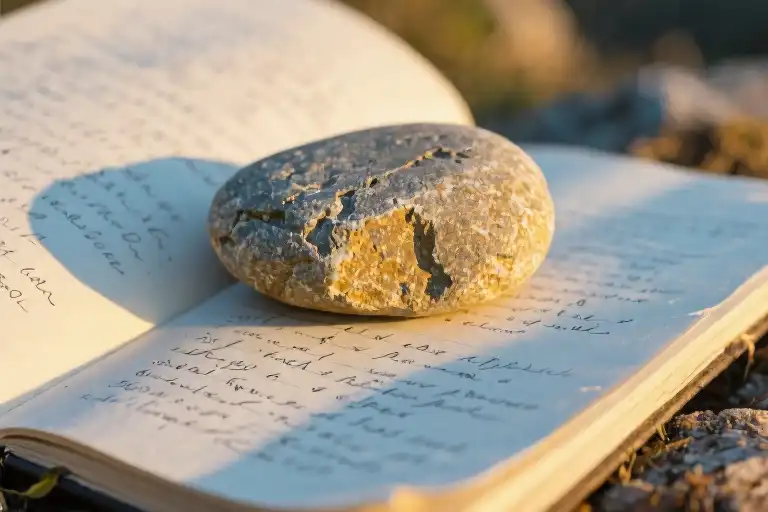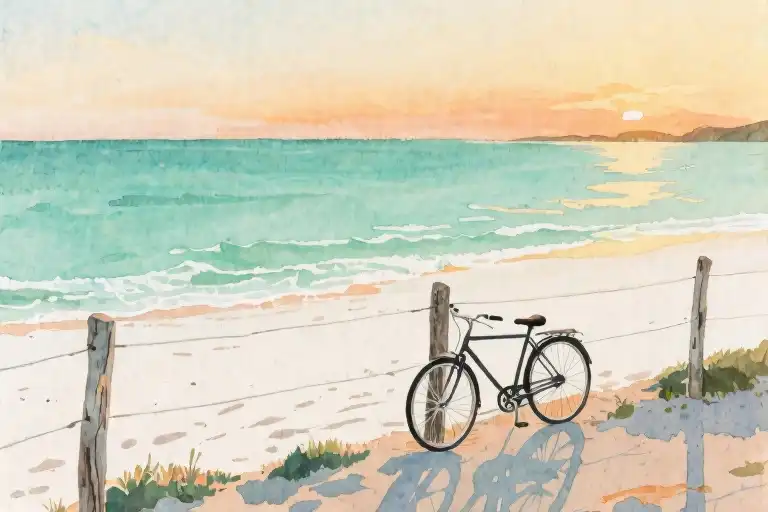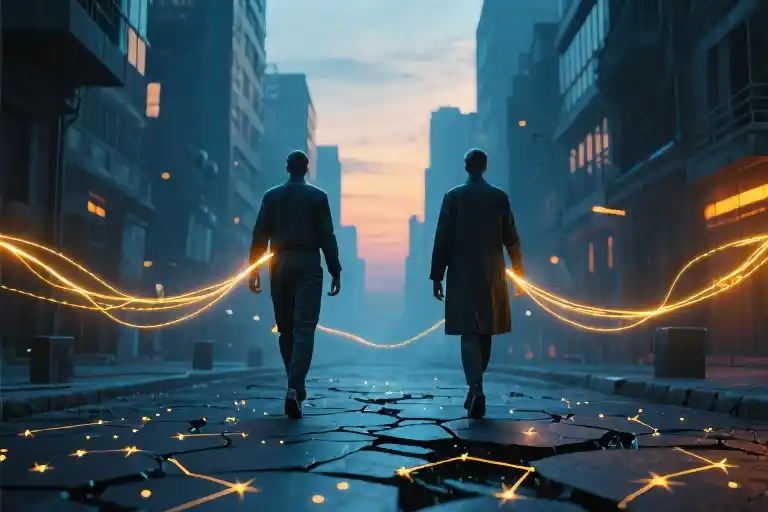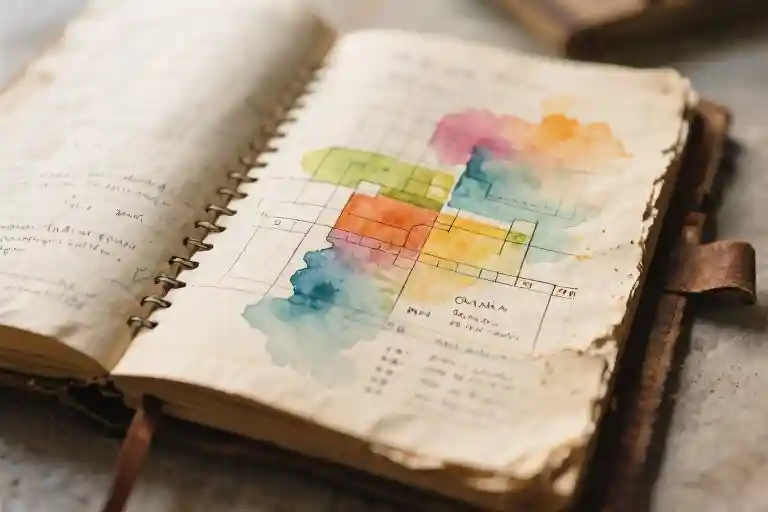There’s a thin line between memory and haunting — one I’ve walked more times than I can count. Not the kind that leaves blisters on your feet, but the sort that etches itself into your ribcage, leaving invisible marks that only you can feel when breathing gets heavy after midnight.
Your memories might feel like curated exhibits in a museum — neatly labeled, safely behind glass. Or perhaps they’re more like battlefields where no one declared ceasefire, where fragments of the past still explode unexpectedly behind your eyelids. Where does your collection live? In the carefully arranged display cases of nostalgia, or the minefields of unresolved history?
Memory isn’t just mental scrapbooking. When certain recollections develop claws instead of fading gently, when they start showing up uninvited to your present moments, that’s when we cross into different territory. The psychology behind memory and trauma healing explains why some experiences refuse to stay politely in the past, why they demand to be felt anew with startling intensity.
I used to think good recall was my superpower — remembering exact dialogue from conversations decades past, the particular way light fell through windows at life’s turning points. Until I realized these weren’t just souvenirs I could shelve at will. They were active participants in my present, whispering commentary during job interviews, elbowing their way into first dates, coloring ordinary Tuesday afternoons with unexpected melancholy.
Here’s what no one prepares you for: how to deal with haunting memories isn’t about defeating them. It’s about learning to walk alongside them without losing your footing in the now. Those mental images that won’t stay filed away? They’re not glitches in your system — they’re evidence of your mind trying to process what your heart hasn’t finished with.
So we walk the line. Night after night. Between then and now. Between what actually happened and how we’ve reshaped it to survive. Between the people we were and the people we’ve become in spite of — or because of — those uninvited memories that pull up chairs at our kitchen tables.
Your turn now. When you close your eyes tonight, what landscape appears? The museum with its quiet artifacts? The battlefield with its lingering smoke? Or perhaps, like so many of us, you’re discovering it’s possible to inhabit both spaces simultaneously — archivist and soldier, curator and wounded warrior — learning that healing begins when we stop fighting the terrain of our own history.
The Two Faces of Memory
Memory is not a single entity but a shape-shifter that wears different masks depending on when and how it chooses to appear. Some days it arrives wrapped in golden-hour light, softening edges with nostalgic haze. Other times, it pierces through with the precision of a freshly sharpened pencil, leaving graphite smudges on your present moment.
The Editing Room of the Mind
Our brains function as meticulous film editors, constantly splicing together footage of our lives. They favor wide shots of birthday cakes with perfectly lit candles, but often cut away just before the wax drips onto the frosting. These selective memories create what psychologists call rosy retrospection – our tendency to recall the past more favorably than we experienced it.
Consider this experiment: Close your eyes and recall:
- The smell of your grandmother’s kitchen (likely cinnamon or baking bread)
- The sound of school dismissal bells (probably cheerful, not the anxiety of unfinished homework)
- Your first kiss (more butterflies, less awkward nose bumping)
Now contrast those with:
- The metallic taste of fear before a medical procedure
- The weight of bad news settling in your stomach
- The way certain words can still make your shoulders tense years later
When Memories Grow Teeth
The transformation from benign recollection to persistent haunting often follows trauma patterns. Repressed memories don’t disappear – they mutate. What begins as a protective mechanism (your mind saying “we can’t process this now”) becomes a psychological boomerang. Studies on memory suppression show that intentionally buried thoughts return with 30% greater emotional intensity.
Three warning signs your memories have shifted from archives to active participants:
- Physical reactions – Elevated heart rate when encountering related triggers
- Time distortion – Feeling transported back rather than recalling forward
- Narrative fractures – Gaps in your personal timeline that ache like missing teeth
The Curator’s Dilemma
We all possess what memory researchers call an internal museum – a mental space where we display certain events while storing others in climate-controlled vaults. The challenge arises when:
- Exhibits rearrange themselves without permission
- “Do Not Touch” signs get ignored
- The gift shop sells distorted postcards of actual events
A healthier approach? Become an archaeologist rather than a curator. Archaeologists:
- Expect fragments rather than complete artifacts
- Understand context shapes meaning
- Recognize restoration changes the original
The Daylight Test
Try this tonight: When a memory surfaces, ask:
- Is this mine to carry? (Some burdens belong to others)
- What color is it now? (Pastel? Neon? Faded?)
- Where does it live in my body? (Head? Hands? Hollow spaces?)
Memories that pass the daylight test often lose their sharp edges. Those that don’t might need professional excavation – and that’s perfectly valid. After all, even the most careful editors need production assistants.
Memory and trauma healing begins when we stop asking “Why can’t I forget?” and start wondering “What is this trying to show me?” The answer often lies not in the memory itself, but in the thin space between its teeth.
The Cage of Silence
Unspoken words have a way of fossilizing inside us. They settle between ribs like sedimentary layers, hardening with each passing year until breathing itself feels like moving through stone. This isn’t the dramatic collapse of trauma—it’s the slow calcification of everyday silences.
Consider the morning rituals of avoidance: the alarm clock’s shrill interruption cutting through dreams, the immediate reach for phones to flood consciousness with digital noise before memories can surface. These aren’t just habits; they’re the architecture of a self-made prison. The bars are forged from hundreds of I’m fines and It’s nothings, each dismissal adding another layer to what psychologists call emotional petrification.
The body keeps score in minerals
- Shoulders that slope forward under invisible weight
- A jaw that locks during sleep
- Hands that form fists around grocery lists
These aren’t random tensions. They’re topographic maps pointing to where words got stuck. That persistent ache below your right shoulder blade? Perhaps where an apology crystallized. The way your throat constricts during certain songs? Maybe the shape of a confession that never found air.
Memory and trauma healing begins with recognizing these bodily landmarks. Unlike traditional wounds, emotional calcification doesn’t show on X-rays. You won’t find repressed memories glowing on a scan, yet their presence alters your posture, your gait, the very way you occupy space.
Breaking the silence cycle
- Locate the deposits – Notice where tension gathers during emotional triggers
- Softening exercises – Gentle movement to increase blood flow to armored areas
- Verbal archaeology – Writing prompts to excavate fossilized feelings
Modern life provides endless tools for how to deal with haunting memories—distractions masquerading as solutions. But no amount of productivity or entertainment can dissolve these internal concretions. Like water wearing at limestone, the process requires consistency over force.
That childhood version of yourself still standing in the doorway? She’s not waiting for a grand gesture. She needs what all trapped things need: acknowledgment. A simple I see you now whispered in the shower. A finger tracing the outline of your younger face in photographs. These small acts begin the chemical reaction that turns stone back to sediment, then eventually to soft earth.
The cage exists because it once protected you. Honor that before dismantling it. Your silence was never weakness—it was the survival strategy of someone doing their best with limited tools. Now you get to choose better ones.
Tonight, when the memories come pacing
- Place a hand where the words are lodged
- Breathe into that space until it warms
- Whisper one true thing to the dark
This is how we melt the calcification. Not through force, but through the patient heat of presence. The bars will dissolve at their own pace, in their own time. What matters is that you’ve stopped pretending they aren’t there.
Conversations with Ghosts
The Ink of Your Truth
Stationery stores never warn you about the alchemy of pen colors. That blue ink flows like a mountain stream—cool, detached, observational. It’s the shade you choose when writing “I remember when…” sentences that float half an inch above the paper. Red bleeds through three pages. It’s for the words that still pulse with the heat of playground injustices and unmade apologies.
Here’s how to begin:
- Find your childhood handwriting – Dig up an old notebook or birthday card. Notice how the letters curled protectively around certain vowels. That’s your authentic voice before the world taught you to write in straight lines.
- Date it twice – At the top right corner: today’s date. At the top left: the year you’re addressing (e.g., “October 2003”). This temporal bridge makes the conversation tangible.
- Let the ink choose you – Hold multiple pens uncapped. The one that makes your fingertips tingle when remembering that specific moment? That’s your truth-teller.
Pro tip: Keep saline solution nearby. Not for the pens—for when saltwater from your eyes smudges the freshly written “I’m sorry no one believed you.”
The Safe Return
Revisiting physical spaces where memories fossilized requires psychological scaffolding. Try this “safe bubble” technique before stepping into old neighborhoods or childhood homes:
Visualization exercise (do this in your current space first):
- Identify three sensory anchors – The weight of your phone in your pocket, the citrus scent of your hand lotion, the faint hum of your refrigerator.
- Create an imaginary force field – Picture these present-moment sensations forming a translucent bubble around you. Unlike childhood, you control this membrane—it lets awareness in but keeps overwhelm out.
- Pack an exit strategy – Literally set a timer for 15 minutes. Figuratively, memorize the quickest route to a nearby café or park bench.
When you finally walk those familiar streets, the bubble allows you to observe rather than dissolve. You’ll notice how the maple tree you climbed now barely reaches the second-story window. How the sidewalk crack where you skinned your knee has been patched with darker concrete—a visible scar matching your invisible ones.
The Unfinished Conversation
Some dialogues require more than stationary. For memories that resist ink, try these unconventional formats:
- Text messages to nowhere – Type unsent notes in your phone using the year as the contact name (e.g., “2001”). When ready, screenshot and burn the images in a metal bowl (safety first). The digital ashes often feel lighter than paper ones.
- Voice memos in dialects – Speak to your younger self in the vocabulary of that era. Use the slang, the pitch, the nervous laughter that used to punctuate sentences. Play it back during your next shower—let the steam carry away what no longer serves you.
- Playlist prescriptions – Curate three songs: what you listened to then, what you wish you’d heard, and what comforts you now. Listen sequentially while tracing your lifeline on your palm—from wrist to fingertips, past to present.
The Haunting Paradox
These conversations reveal an unexpected truth: the ghosts aren’t chasing you—you’ve been chasing them. Each written word, each revisited location is a deliberate step toward integration. That nightmare version of your childhood bedroom? It shrinks every time you describe its wallpaper pattern to your therapist. The phantom footsteps behind you? They fall out of sync when you turn and say “Oh, it’s just you again.”
Remember: Healing isn’t about silencing the past. It’s about changing the volume at which it plays. Some days will be concert hall acoustics. Others, muffled earbuds on a crowded train. Both are progress.
Your Turn (When You’re Ready)
Grab the nearest writing tool—lipstick on a napkin, finger on a fogged mirror, anything counts. Tell that younger self one of these truths:
- “I brought us this far.”
- “The monsters weren’t your fault.”
- “We eat ice cream for breakfast now.”
Then listen for the reply in tomorrow’s sunlight, in the unexpected laughter that catches in your throat, in the sudden recognition that the line between memory and haunting has widened just enough to breathe.
The Thin Line as a Path
On my desk sits a small, unremarkable stone. Its surface is smooth from years of being carried in pockets, its edges softened by time and touch. To anyone else, it might look like a paperweight or a forgotten souvenir. But to me, it’s a survivor—just like the memories I’ve learned to carry rather than outrun.
When Ghosts Become Guides
The stone first appeared in my life during what I now call “the year of reckoning”—when every buried memory seemed to rise like groundwater after heavy rain. I’d spent decades believing these recollections were predators hunting me through time. Then one sleepless night, I noticed something peculiar: the memories never actually harmed me. They circled. They growled. But their teeth never broke skin.
This realization changed everything. What if these weren’t hauntings but signposts? Not enemies but reluctant tour guides through territories of my own history? I began experimenting with a simple reframe:
- Instead of “This memory hurts me”, trying “This memory needs my attention”
- Rather than “I can’t escape this”, asking “What is this trying to show me?”
The Alchemy of Carrying
The stone became my physical anchor for this transformation. Whenever a difficult memory surfaced, I’d hold it and practice what therapists call cognitive defusion—the art of observing thoughts without being consumed by them. Some days I’d whisper:
“You’re just a story my mind tells. You have weight but not power.”
Other times, I’d place the stone in sunlight and watch how shadows shifted across its surface—a tangible reminder that even the darkest memories change when exposed to new perspectives.
Survivor Objects
Psychologists confirm what trauma survivors instinctively know: objects can become vessels for resilience. My stone joined a lineage of:
- War veterans’ lucky coins
- Refugees’ family photographs
- Burn survivors’ first pieces of new clothing
These survivor objects share three transformative qualities:
- Witness – They’ve seen our darkest moments
- Transition – They move with us from pain to presence
- Choice – We actively decide their meaning
Walking the Line Forward
Now when I walk that thin line between memory and haunting, I carry the stone in my palm. Its weight reminds me:
- The past has mass but doesn’t dictate motion
- What once dragged me down can now ground me
- Even the faintest path becomes clearer with repeated steps
The ghosts haven’t disappeared. Some still sit at my table uninvited. But increasingly, they feel less like specters and more like old teachers—the kind whose lessons only make sense years later. And when they ask “Do you remember?”, I can now answer differently:
“I do. But this time, I’m choosing how.”
On difficult nights, I trace the stone’s smooth contours—each curve a testament to erosion and endurance. It’s no longer about escaping memories, but carrying them with intention. Because anything held long enough eventually becomes part of your strength.
Your Turn: What ordinary object could become your survivor stone? A seashell? A keychain? The next time a difficult memory surfaces, hold it and whisper: “You’re part of my story, but not all of it.”
The Thin Line That Still Holds
The path between memory and haunting is no wider than a spider’s thread at dawn—yet it bears the weight of every step we dare to take. This fragile boundary, once a tightrope of terror, gradually becomes something else entirely: proof that we’ve learned to carry both the light and shadows of our past without breaking.
The Alchemy of Survival
What we call haunting often reveals itself as memory’s stubborn attempt at reconciliation. Those sharp-edged recollections that used to make us flinch now serve as peculiar landmarks—not to trap us in the past, but to measure how far we’ve traveled. The childhood bedroom where you first learned fear becomes the very place you recognize your courage. The silence that once imprisoned you now holds space for truths too profound for words.
This transformation doesn’t erase the pain, but it changes your relationship with it. Like turning a prism to catch different light, you begin noticing how certain memories refract differently with time. The goodbye that shattered you at twenty becomes the catalyst that taught you resilience at thirty. The betrayal that left you breathless eventually reveals the contours of your own boundaries.
Carrying the Unburied
Some memories refuse to stay neatly packed in mental archives, and perhaps that’s their purpose. Their insistence on reappearing—during your morning coffee, in the middle of work meetings, as you’re drifting to sleep—isn’t punishment, but an ongoing conversation. They ask not “How could this happen?” but “What will you do with me now?”
Consider the Japanese art of kintsugi, where broken pottery is repaired with gold lacquer. The fractures aren’t hidden; they’re illuminated. Your memories function similarly—the repaired cracks tell the story of survival. That sudden rush of sadness when you smell a particular perfume? That’s the gold seam in your personal mosaic. The way your chest still tightens passing a certain street corner? That’s the patina of a life fully lived.
Walking Forward
The line may be thin, but it’s astonishingly strong—strong enough for:
- Tandem footsteps: The child you were and the adult you’ve become walking side by side
- Weight distribution: Carrying painful memories in one hand and hard-won wisdom in the other
- Future crossings: Using this balancing skill for whatever comes next
You’ll notice the path widens imperceptibly over time. Where you once inched along with arms outstretched for balance, you now walk with hands in pockets. The ghosts become traveling companions. The hauntings transform into visitations.
Your Turn to Walk
Before you close this page, take a moment with these questions:
- Which memory have you been trying to rebury that might need exhuming?
- Where can you spot the “gold seams” in your personal history?
- What single step—even a sideways one—could you take tonight along your thin line?
Leave a comment with one word that describes your relationship with memory now versus five years ago. Notice the space between those two words—that’s where your healing lives.
The line trembles but holds. The path persists. And you—you’re still here, walking.





